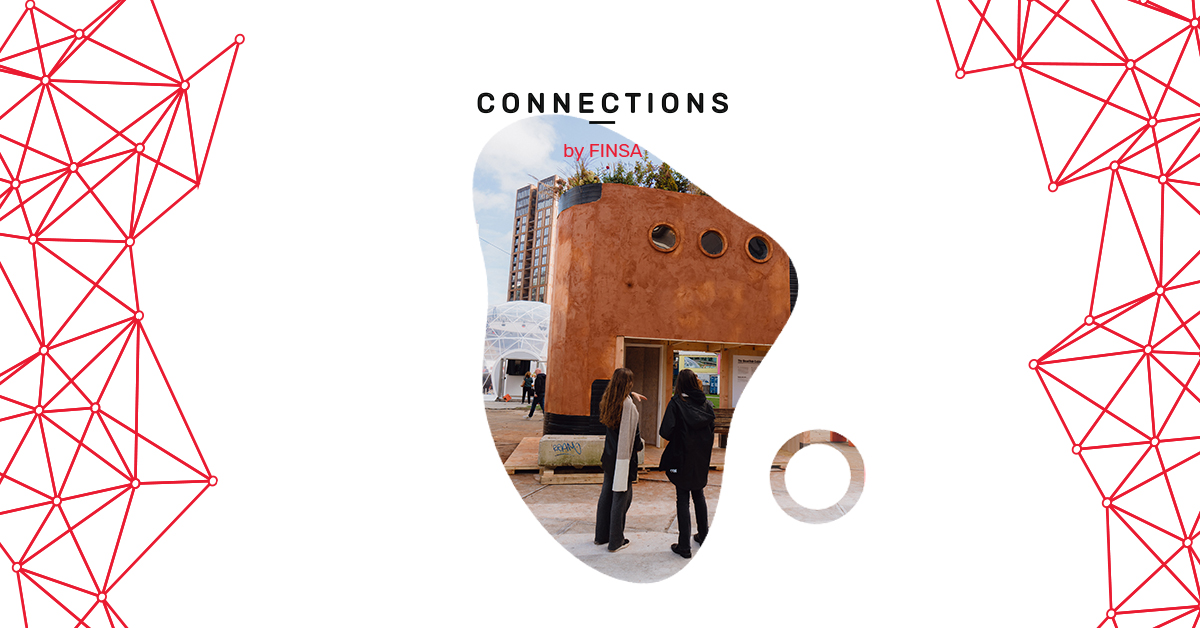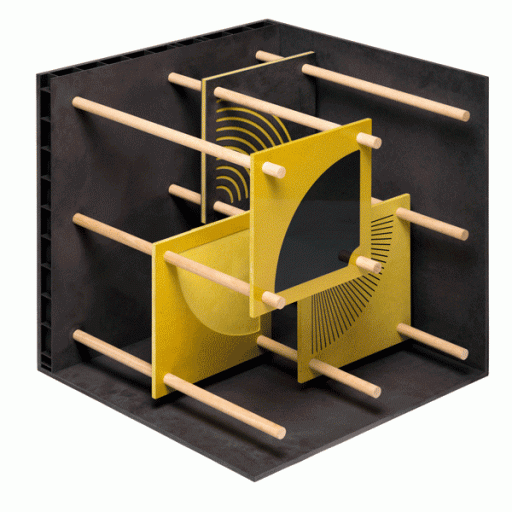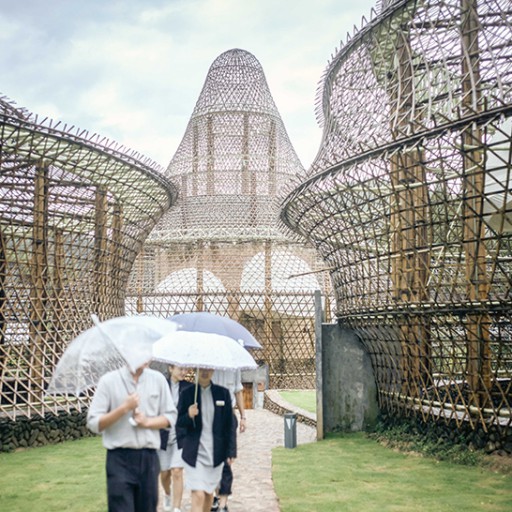Its slogan this year is ‘Get Set’, and that’s exactly what Dutch Design Week 2022 asked us to do, with a program chock-full of exhibitions and experiences that highlighted the ‘urgency’ to act. The event took place in Eindhoven, where detailed projects, meaningful collaborations, and innovative solutions from different designers and studios offered solutions to the challenges that society will face over the next few years. In the words of Miriam van der Lubbe, DDW2022’s creative director, “doing nothing is not an option anymore”.

Here are 9 of our favourite design trends that we believe will be essential to rethinking and rebuilding the world that we live in.
“Rethinking plastic”
This is a great exhibition which organised by the Yksi Expo platform, with every type of product, project, and presentation imaginable using plastic in a better, more intelligent, and more innovative way. One example is the work of the Packadore Collective, who develop sustainable packaging such as returnable and reusable boxes for food, ink-free cardboard for detergent packaging, glue-free labels, and reusable seals for glass containers:
Ver esta publicación en Instagram
Rethinking plastic also means coming up with biodegradable alternatives to such a cheap material that we tend to throw away very quickly. The GOLD project is doing just that, with athletic wear made from 100% collagen and absolutely no plastic. It’s inspired by the properties of the outermost layer of the cow’s intestine, a very thin membrane that is also extremely strong and elastic. Berlin-based design lab Wint has sequenced its RNA in order to replicate it using a biopolymer, which will then be used to produce high-performance textiles. Check out the result below:
Ver esta publicación en Instagram
Ver esta publicación en Instagram
More sustainable than ever
Circular design is catching on. Recycling and using discarded materials has practically become the norm in the sector. We saw evidence of this approach in The Bin, which transforms climbing shoes collected from 16 climbing walls in the Netherlands into gym floors. It’s a new value chain for a shoe that’s 50% rubber and that climbers usually have to replace every few months.
Ver esta publicación en Instagram
Then there’s designer Robert Marsé, with his collection of chairs made from objects that were found or discarded within a 10-kilometre radius of his home. The collection is called “NEW!”, giving new meaning to the word.
Ver esta publicación en Instagram
Richard Sluijs is behind a series of fantasy rockets entitled “CORONA RICHLAB ROCKET PROGRAM (CRRP)” created during the pandemic. They were inspired by the legendary Tintin model, which the designer saw in a shop window while out on a walk. They are made entirely from waste material and are proof that recycling can be fun.
Ver esta publicación en Instagram
3D printing, but make it circular
Omlab is a Dutch circular design studio with a biological focus. They are working on ecologically sound options for 3D printing in construction with the goal of making 3D Concrete Printing (3DCP) a reality in the near future. No plastic, no cement. A great example of this trend is this 3D stool, made from a mix of raw materials derived from the production of potable water and the treatment of wastewater:
Ver esta publicación en Instagram
Ver esta publicación en Instagram
Another example is the environmentally friendly lighting options from Philips/Signify. These 3D-printed, recycled lamps from the “COASTAL BREEZE” series are made from old fishing nets that were found in the ocean. The lamps are made locally and on demand and show how circular materials can help something go from garbage to gorgeous.
Experimenting with materials: egg shells, olive pits, and shredded newspaper
DDW2022 had many new and surprising materials on display, as well as some extremely thought-provoking combinations. London-based designer Lewis Duckworth showed the beauty of plywood as a decorative material by taking it back it its organic and raw origins in “SPLITTING IMAGE”. The title is an obvious reference to the famous British TV show, Spitting Image, which aired in the 80s and featured satirical sketches with dolls.
Ver esta publicación en Instagram
“WOVEN BRICKS” is the result of Iris Toonen’s research into how to combine the transparency and hardness of glass with the softness of textiles.
“EGGWARE” showed off a new material, similar to ceramic and cement, but made from eggshells, a valuable resource that is readily available, with billions of them being thrown away all over the world. The material is held together by algae, a natural binding agent that can be used to manufacture many different kinds of objects. It’s all the work of YLEM, a design and research lab headed up by Midushi Kochhar, an industrial designer from London’s Central St. Martins University.
Ver esta publicación en Instagram
Other examples included sustainable clothing from the start-up Gus of Change BV, with pieces designed for water sports that are made from a mix of 100% recycled nylon sourced from abandoned fishing nets, shredded newspaper, and natural cork; a collection of ceramics made from wood ashes by the designer Agne Kurecenkaite and scientist Marija Spokaite; and “NONTALO”, an ingenious stool in a compostable material that’s made from olive pits, from the minds of two Spanish industrial designers, Irene Segarra and Irene Martínez. Thanks to its modular nature and organic shape, the stool can be made bigger, combined with others, and turn into a chair, bench, and more.
Ver esta publicación en Instagram
Ver esta publicación en Instagram
Ver esta publicación en Instagram
Flat pack furniture: an ode to the functional and the customisable
Two ideas stand out in this category. The first is “KILO” by Jan Paul Konig and Peter Smit, with its furniture that can be configured in different ways and sent in flat packs which are then assembled by the buyer, thus reducing its carbon footprint. The process is very simple and takes just a few minutes, with the pieces designed to be put together without the need for screws, nails, or glue.
Ver esta publicación en Instagram
Ver esta publicación en Instagram
Then there is the “MINIMONO” from Berlin studio Kilikolo, another example of multi-faceted furniture. Made of recycled HDPE and designed to last a lifetime, all of their pieces come in flatpack, are made from one material only, can be used indoors or outdoors, and are very easy to put together.
Ver esta publicación en Instagram
Ver esta publicación en Instagram
Feel, touch, and experience in the pursuit of wellbeing
Calm, inner peace, tranquillity, and happiness are all trending in design. In line with this, “SPACES FOR WELLBEING”, from Eindhoven-based studio Alissa+Nienke (A+N), created for DDW2022 in collaboration with a psychologist and a sensory curator, offered innovative interiors that provided a multisensorial experience. The intention was to influence the mood of visitors and achieve physical and emotional wellbeing through the elements, materials, and installations that form part of the space. An example of this is “ELEPHUNK”, a table with a rough surface made from recycled leather fibres that is designed to be played with during a conversation, something which, according to neuroscience, improves concentration and interaction.
Ver esta publicación en Instagram
Building houses and furniture using the ‘clip’ system
German studio Cliphut, which specialises in sustainability and participative design solutions, is a big fan of this ingenious timber construction system with its clip connection mechanism that eliminates the need for screws or glue. They use it for furniture, partitions, and minimalist houses, as it simplifies assembly and disassembly, and the fact that it requires nothing more than timber means it’s 100% environmentally friendly. All ClipHut products can be taken apart and reused in another way; for example, a bed can be turned into a bookshelf and vice versa.
Ver esta publicación en Instagram
Neo-craftsmanship
Several digital and artisanal creators exhibited their work as part of “New Crafts”, an event designed to stimulate experimentation, research, and an exchange of knowledge. For example, in “CHOUB” (which translates to ‘wood’ in Farsi), Mehdi Mashayekhi combined art, technology, and artisan craftsmanship to create clothing from plywood and leather.
Ver esta publicación en Instagram
Amsterdam-based textile innovators Byborre collected discarded textiles for weeks so that designer Tejo Remy could make a new version of his iconic “RAG CHAIR”, one of his graduate projects from 1991, which is also his way of protesting against excessive consumption.
Ver esta publicación en Instagram
Ver esta publicación en Instagram
Ivi van Keulen surprised Eindhoven with her “SMASHING HERITAGE: LE FREAK CÉRAMIQUE”, in which she broke vases and used the fragments to create new and bold shapes, leading to new thoughts and ideas and giving these pieces a different kind of value in this modern world.
inCC offered a two-for-one deal with “ANATOMIC”, a tapestry and a lounge chair in one that was designed by Nynke Tynagel. Made from recycled PES and Dutch oak, it features a very complex 3D knit, with just 600 pieces made.
Ver esta publicación en Instagram
Living design
Nature is the key, our source of life and our inspiration. For Emil Olpinski, this is captured in “POLIPOS DE CORAL”, a project that straddles biophilia and the search for creating mechanical movement. The result is a ‘living’ piece of jewellery that encapsulates the essence of living organisms such as plants and coral.
Ver esta publicación en Instagram
“RAÍCES FLOTANTES”, from designer Michela D’Angelo and her Mida-Lab, combines rattan, ceramic, glass, and silicone to create a unique organic candelabro.
Ver esta publicación en Instagram
Ver esta publicación en Instagram
Alissa+Nienke’s “BIO MIRROR” is another example of the organic and ‘living’ design trend:
Ver esta publicación en Instagram
Which is your favourite trend of the nine we’ve highlighted from the international and Dutch design scene? Share your thoughts on social media using #ConnectionsByFinsa.




